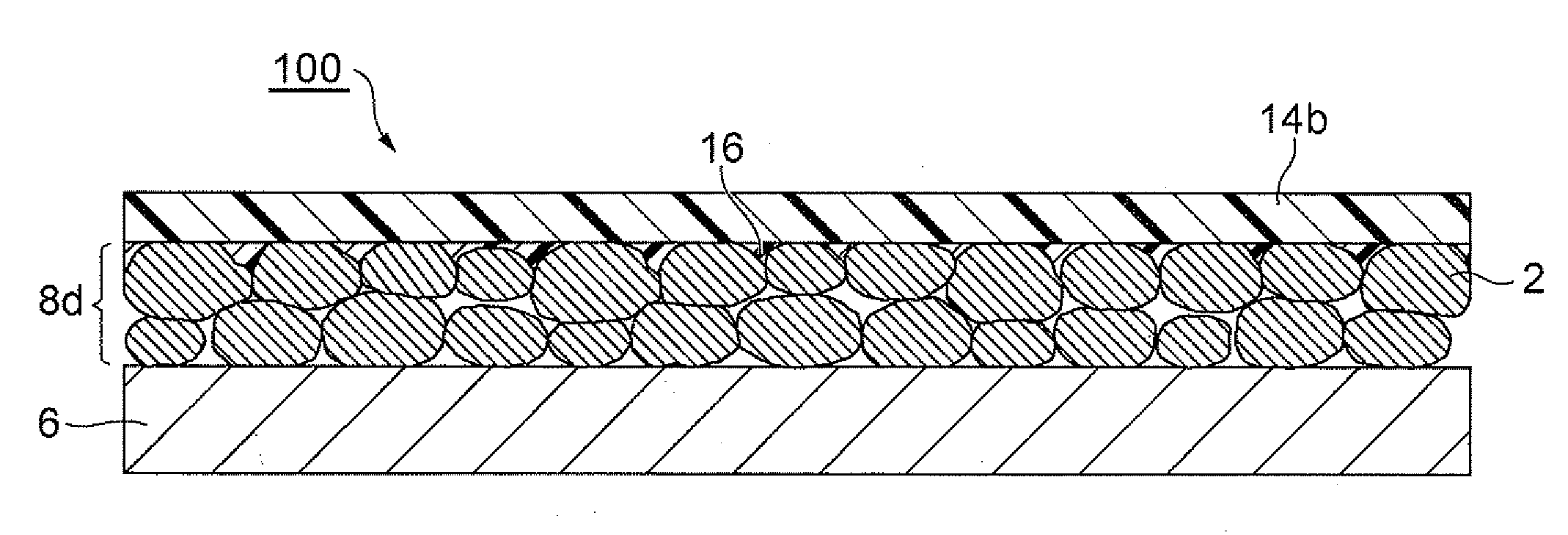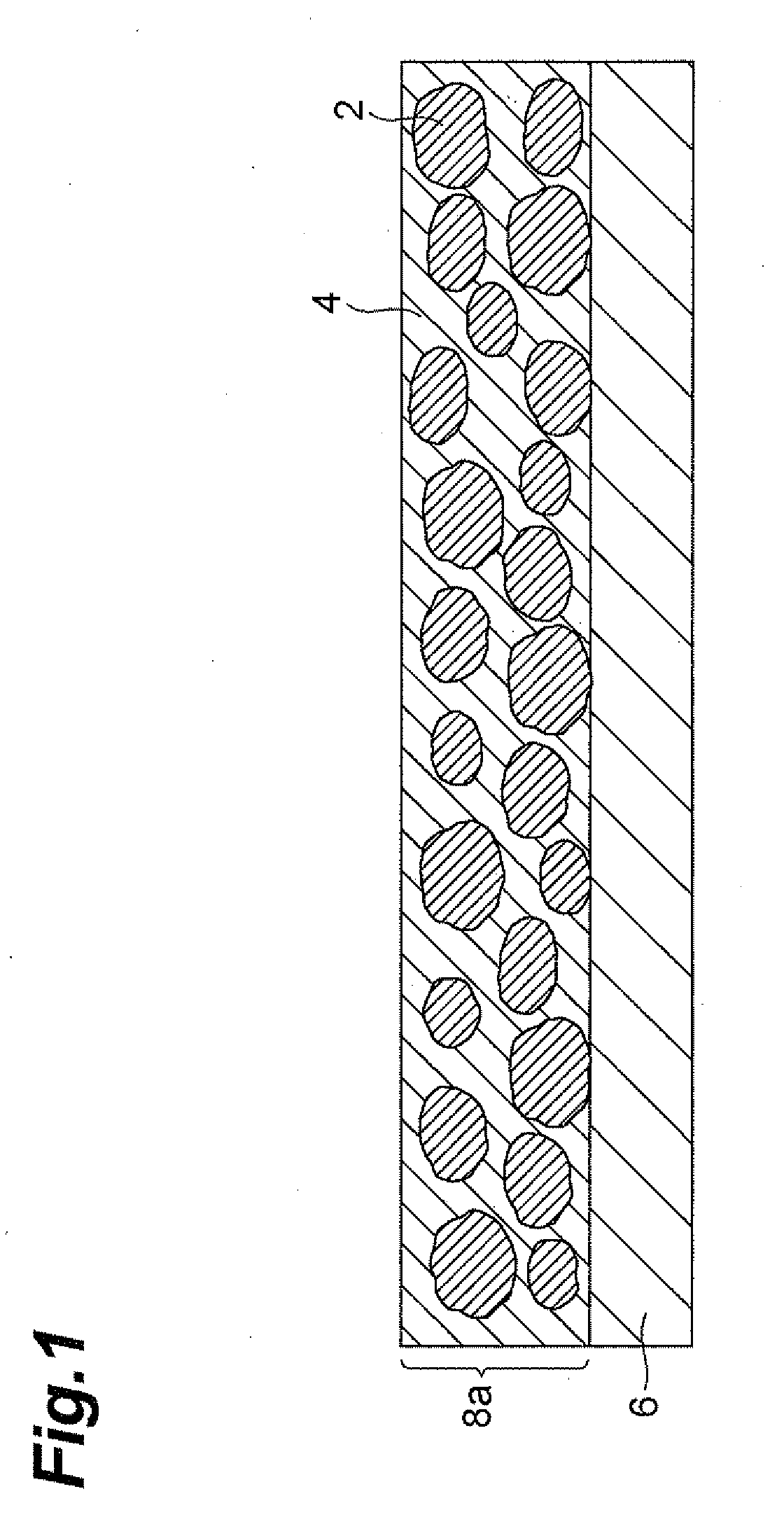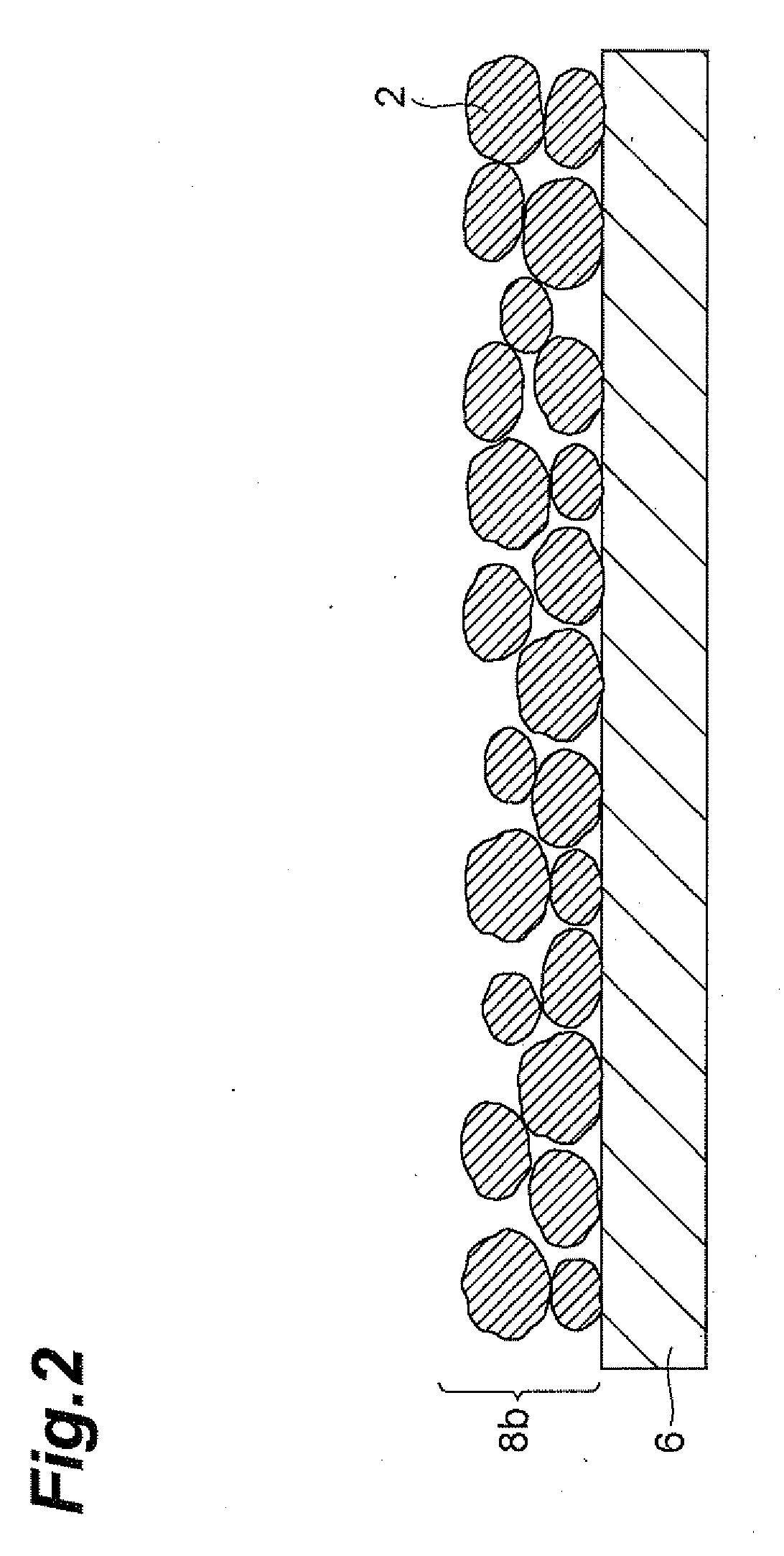Electrode manufacturing method and electrode
- Summary
- Abstract
- Description
- Claims
- Application Information
AI Technical Summary
Benefits of technology
Problems solved by technology
Method used
Image
Examples
first embodiment
Electrode Manufacturing Method
[0047]The electrode manufacturing method in accordance with the first embodiment comprises a step (first step: S1) of applying an active material layer coating material containing active material particles, an active material layer binder, and a first solvent to a current collector so as to form a coating film made of the active material layer coating material; a step (first solvent removing step: S2) of removing the first solvent from the coating film; a step (second step: S3) of applying a second solvent to the coating film having removed the first solvent; a step (third step: S4) of applying an SPE layer coating material containing a solid polyelectrolyte (SPE), an SPE layer binder, and a third solvent to the coating film coated with the second solvent; and a step (solvent removing step: S5) of removing the second and third solvents from the coating film and the SPE layer precursor.
[0048]The first solvent is a good solvent for the active material lay...
second embodiment
[0095]The electrode manufacturing method in accordance with the second embodiment of the present invention will now be explained. Here, while omitting matters common in the first and second embodiments, only their differences will be explained.
[0096]Unlike the first embodiment, the second embodiment does not use the second solvent. The first solvent 4 is a good solvent for the active material layer binder and a poor solvent for the SPE layer binder, while the third solvent is a good solvent for the SPE layer binder.
[0097]As illustrated in FIG. 6, the electrode manufacturing method in accordance with the second embodiment applies an active material layer coating material containing active material particles 2, an active material layer binder, and the first solvent 4 to a current collector 6, so as to form a coating film 8a (active material layer precursor) made of the active material layer coating material.
[0098]Next, an SPE layer coating material containing an SPE, an SPE layer bind...
example 1
Making of Active Material Layer Coating Material
[0109]Active material particles made of graphite (product name: OMAC, manufactured by Osaka Gas Chemicals Co. Ltd.), PVDF (homopolymer; product name: 761, manufactured by Atofina) as an active material layer binder, and carbon black (product name: DAB, manufactured by Denki Kagaku Kogyo K.K.) as a conductive auxiliary were dispersed into NMP, which was a good solvent (first solvent) for the active material layer, so as to prepare a negative electrode coating material.
[0110]Making of SPE Layer Coating Material
[0111]A VDF copolymer (copolymer of vinyl fluoride and propylene hexafluoride; product name: 2801, manufactured by Atofina), which was a solid polyelectrolyte, and a VDF copolymer (copolymer of vinyl fluoride and propylene hexafluoride; product name: 2801, manufactured by Atofina), which was an SPE layer binder, were dispersed into acetone, which was a good solvent (third solvent) for the SPE layer binder, so as to prepare an SPE l...
PUM
 Login to View More
Login to View More Abstract
Description
Claims
Application Information
 Login to View More
Login to View More - R&D
- Intellectual Property
- Life Sciences
- Materials
- Tech Scout
- Unparalleled Data Quality
- Higher Quality Content
- 60% Fewer Hallucinations
Browse by: Latest US Patents, China's latest patents, Technical Efficacy Thesaurus, Application Domain, Technology Topic, Popular Technical Reports.
© 2025 PatSnap. All rights reserved.Legal|Privacy policy|Modern Slavery Act Transparency Statement|Sitemap|About US| Contact US: help@patsnap.com



